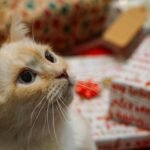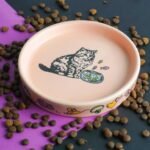Is your floor constantly wet? Do you find yourself refilling your cat’s water bowl multiple times a day? If your cat keeps knocking over their water bowl, you’re not alone. This frustrating behavior is common among our feline friends, and understanding why it happens is the first step to solving the problem.
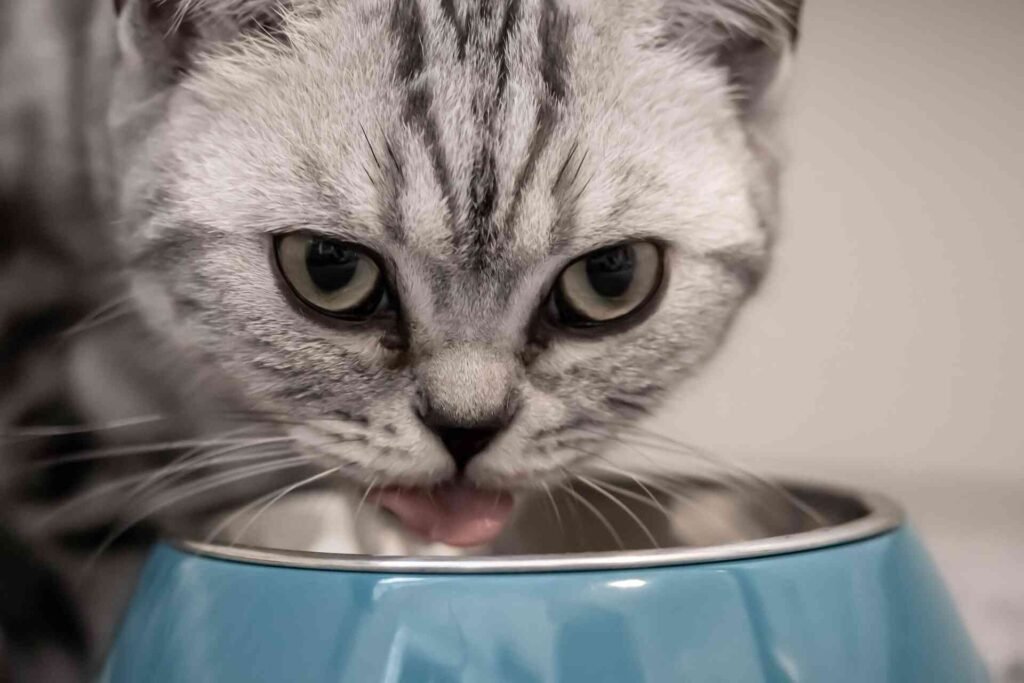
Why Your Cat Won’t Stop Knocking Over Their Water Bowl
Cats are fascinating creatures with complex behaviors that sometimes leave us scratching our heads. When your cat keeps knocking over his water bowl, there’s usually a logical explanation behind what seems like deliberate mischief.
Fresh Water Preference
Cats are naturally drawn to fresh, moving water, a preference that stems from their evolutionary past. In the wild, standing water can harbor bacteria and parasites, while flowing water is typically safer to drink.
When your cat knocks their water bowl over, they might be trying to create movement in the water or expressing their dissatisfaction with water that’s been sitting out too long. This instinctive behavior explains why many cats are fascinated by dripping faucets or running water sources.
Whisker Stress
One of the most common yet overlooked reasons why a cat keeps knocking over their water bowl is whisker fatigue or stress. Cats’ whiskers are highly sensitive sensory tools that help them navigate their environment.
When a water bowl is too small or deep, your cat’s whiskers may touch the sides while drinking, causing discomfort. This sensation, known as whisker stress, can be irritating enough that your cat decides to tip the bowl over instead of drinking from it normally.
Playful Exploration
Water is fascinating to many cats. The reflective surface, the way it moves, and how it responds when touched can trigger your cat’s natural hunting and play instincts. If your cat knocks over water bowl after water bowl, they might simply be entertaining themselves with what they see as an interactive toy.
Young cats and kittens are especially prone to this behavior as they explore their environment and learn about cause and effect. What better way to learn than by batting at water and watching it splash across the floor?
Location Issues
Cats are particular about where they eat and drink. If your cat keeps knocking water bowl over, the placement might be the problem. Cats typically prefer:
- Quiet locations away from noisy appliances
- Areas separated from their litter box
- Spots where they feel safe and not vulnerable to “attack”
- Places with easy escape routes
A poorly positioned water bowl might lead your cat to express dissatisfaction by knocking it over.
Attention-Seeking Behavior
Have you noticed that your cat knocks over his water bowl right when you’re busy or trying to sleep? This might not be a coincidence. Smart cats quickly learn which behaviors get a reaction from their humans.
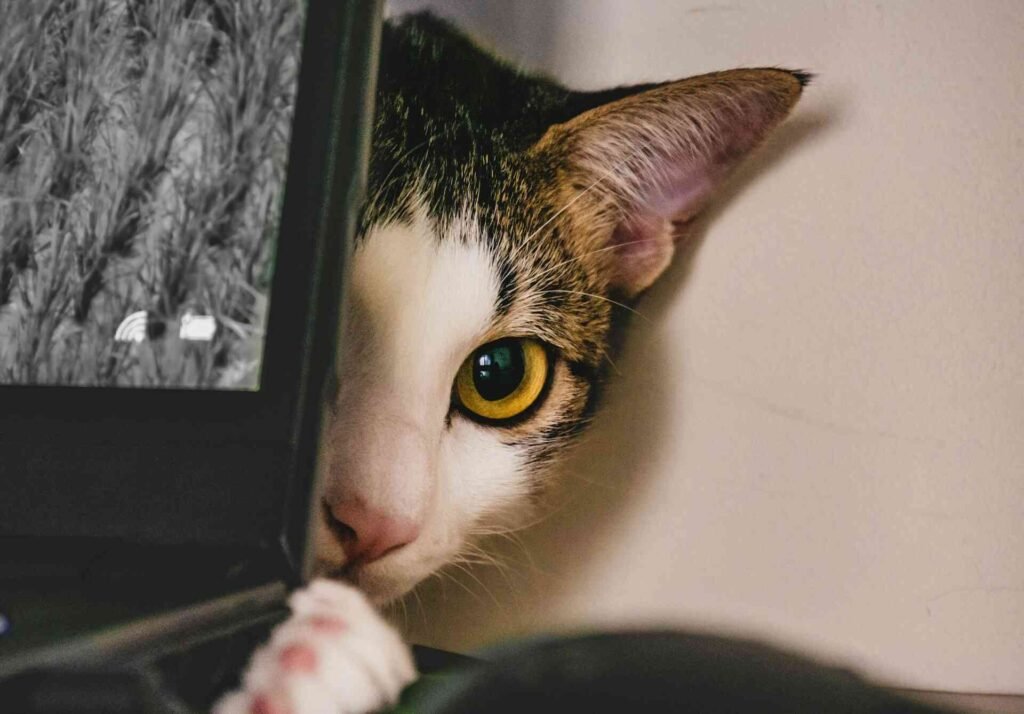
If you rush over, make a fuss, or immediately refill the bowl whenever your cat tips it over, you might inadvertently be reinforcing the behavior. From your cat’s perspective, knocking over the water bowl is an effective way to get your immediate attention.
Practical Solutions When Your Cat Keeps Knocking Over Water Bowl
Now that we understand why cats engage in this frustrating behavior, let’s explore practical solutions to keep your floors dry and your cat properly hydrated.
Choose the Right Bowl
When shopping for a water bowl for a cat that keeps knocking over water bowl, consider these features:
- Wide, shallow design: Allows cats to drink without whisker stress
- Heavy, weighted base: Provides stability against pawing and pushing
- Non-slip bottom: Prevents sliding across the floor
- Non-reflective material: Reduces the temptation to play with reflections
Ceramic and stainless steel bowls are often good choices as they’re heavy enough to resist tipping and don’t harbor bacteria like plastic can.
Invest in a Cat Water Fountain
If your cat won’t stop knocking over the water bowl, a pet water fountain might be the perfect solution. These devices provide continuously circulating water that appeals to a cat’s preference for fresh, moving water sources.
Water fountains come in various designs and materials, from simple plastic models to elegant ceramic options. Not only do they satisfy your cat’s instinctual preference for running water, but their weight and design make them much harder to tip over.
Create a Spill-Proof Station
For the determined bowl-tipper, create a spill-proof station by:
- Placing the water bowl in a shallow tray or mat to catch spills
- Using a silicone mat under the bowl to prevent sliding
- Installing a wall-mounted water bowl holder
- Positioning the bowl in a corner or against a wall to limit access for tipping
Some pet owners have found success with mounting bowls inside a slightly elevated frame, which allows the cat to drink comfortably but prevents them from getting leverage to tip the bowl.
Strategic Placement
Sometimes, solving the problem of why a cat keeps knocking over his water bowl is as simple as moving it to a more appropriate location. Consider these placement strategies:
- Keep water bowls away from food bowls (many cats prefer these separated)
- Place water in multiple locations throughout your home
- Ensure the water bowl is in a low-traffic, quiet area
- Position the bowl away from litter boxes and noisy appliances
Behavioral Training
While cats aren’t as responsive to training as dogs, you can discourage water bowl tipping through consistent responses:
- Ignore the behavior rather than giving immediate attention
- Provide alternative forms of engagement and play
- Reward good behavior when your cat drinks without disturbing the bowl
- Ensure your cat is getting enough mental stimulation to prevent boredom
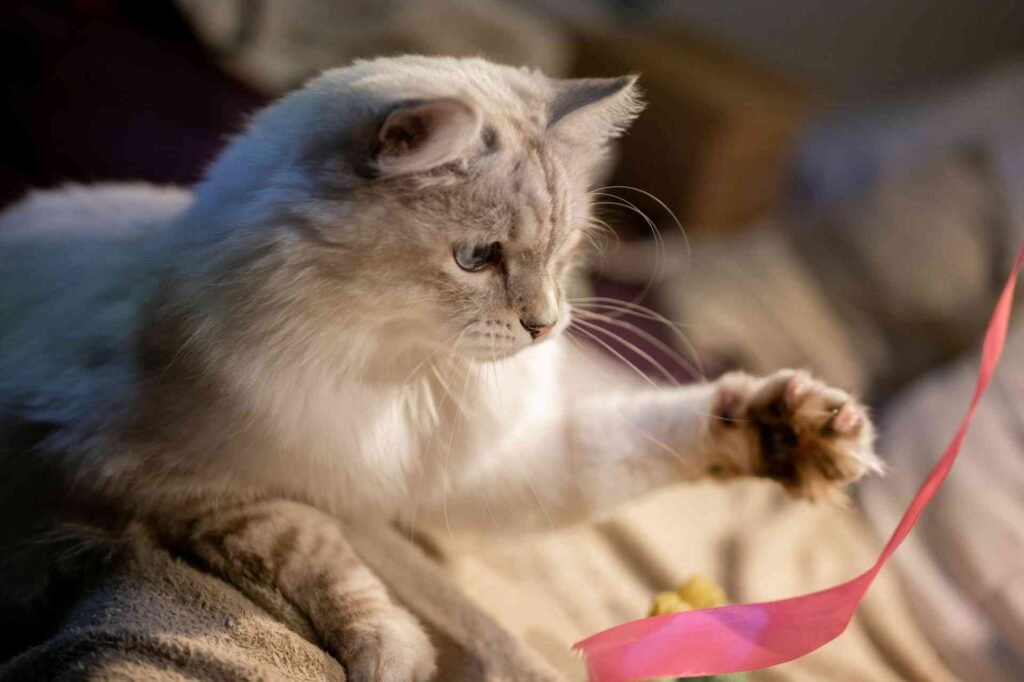
Specialized Solutions for Persistent Bowl Tippers
For cats who are particularly determined to knock over their water bowls, these specialized solutions might help:
Water Dispensers
Gravity water dispensers provide a steady supply of fresh water while being too heavy for most cats to tip over. These dispensers gradually release water into a small drinking area as the level decreases, ensuring your cat always has access to fresh water.
Built-In Water Bowls
Some cat trees and feeding stations come with built-in water bowls that can’t be separated from the structure. This integration prevents tipping and might be a good option for particularly determined cats.
Automatic Water Systems
For tech-savvy pet owners, automatic water systems can be connected to your home’s water supply, providing a constant source of fresh water with minimal risk of spillage.
Your Cat’s Hydration Needs
Keeping your cat properly hydrated is crucial for their health, especially for preventing urinary tract issues. An average cat needs about 3.5-4.5 ounces of water per 5 pounds of body weight daily. This can come from a combination of drinking water and the moisture in their food.
Cats eating primarily dry food need to drink more water than those on wet food diets. If your cat consistently avoids their water bowl or shows reduced interest in drinking, consider incorporating more wet food into their diet to increase hydration.
Signs of adequate hydration include:
- Elastic skin (quick rebound when gently pulled)
- Moist gums
- Normal energy levels
- Regular urination with pale yellow urine
When to Be Concerned
While knocking over water bowls is often just an annoying habit, it can sometimes indicate an underlying health issue. Contact your veterinarian if your cat’s behavior is accompanied by:
- Excessive thirst or increased water consumption
- Pacing around the water bowl
- Pawing at the water without drinking
- Signs of dehydration (lethargy, dry gums, sunken eyes)
- Changes in urination patterns
These could be signs of conditions like diabetes, kidney disease, or other health concerns that require medical attention.
FAQ: Understanding Water Bowl Behaviors
Why does my cat paw at water before drinking?
Cats may paw at water to check its depth or movement, to create ripples that make the water more visible, or simply out of playful curiosity. Wild cats often test water sources with their paws before drinking, and this instinctive behavior remains in domestic cats. If your cat regularly paws at water without excessive splashing, this is typically normal behavior.
Do cats prefer certain types of water bowls?
Many cats have preferences for bowl materials and designs. Whisker-friendly shallow, wide bowls are often preferred over deep, narrow containers. Some cats dislike plastic bowls, possibly due to the scent or taste plastic can impart to the water. Experiments with different bowl types – ceramic, stainless steel, glass – may help you discover your cat’s preference.
How can I tell if my cat is drinking enough water?
Monitoring your cat’s water intake can be challenging. Signs of adequate hydration include regular urination, moist gums, and elastic skin. An adult cat typically needs about 3.5-4.5 ounces of water per 5 pounds of body weight daily. If concerned about hydration, consult your veterinarian about appropriate water intake for your specific cat’s needs, age, and diet.
Should I leave multiple water bowls around the house?
Providing multiple water sources throughout your home can encourage proper hydration, especially in multi-cat households or homes with multiple floors. This strategy respects cats’ natural preference for resource availability and can reduce competition in multi-cat homes. It also accommodates cats who might be reluctant to use a water source near their food or litter box.
Is it normal for cats to prefer running water?
Many cats show a strong preference for running water from faucets or fountains over still water in bowls. This preference likely stems from evolutionary instincts where running water was safer to drink than stagnant sources. If your cat shows this preference, a pet water fountain might significantly increase their water consumption and reduce bowl-tipping behavior.
Conclusion: Keeping the Peace with Your Feline Friend
When your cat keeps knocking over water bowl after water bowl, remember that they’re not doing it just to annoy you. This behavior typically stems from natural instincts or environmental preferences that can be addressed with the right approach.
By understanding why your cat knocks his water bowl over and implementing appropriate solutions, you can ensure your feline friend stays properly hydrated while keeping your floors dry. Whether it’s investing in a weighted bowl, repositioning their water source, or upgrading to a cat fountain, there’s a solution that will work for your particular cat.
Remember that each cat is unique, and solving this issue might require some trial and error. Be patient, observe your cat’s preferences, and don’t hesitate to consult with your veterinarian if you’re concerned about any aspect of your cat’s drinking behavior.
Looking for more? Explore our Cat Health section for more posts like this, visit the Blog for fun and insightful reads, or browse our full Cat Category for everything feline-related, from care to comfort.
Disclaimer: This article is for informational purposes only and does not substitute for professional veterinary advice. Always consult your veterinarian for diagnosis and treatment tailored to your cat’s individual needs. Please verify current product information directly on the retailer’s site before purchasing.
References
- Hydration. (2021). https://www.vet.cornell.edu/departments-centers-and-institutes/cornell-feline-health-center/health-information/feline-health-topics/hydration
Check out our most recent articles!
- Cats and Snow: Why Some Love It and Others Don’tSnow isn’t just uncomfortable for many cats, it’s a complete sensory overload. From cold paw pads to wet fur and changed landscapes, winter challenges feline comfort in unexpected ways. Learn how to recognize stress signals and create cozy alternatives for snow-averse cats.
- Christmas Names for Cats: From Classic to Creative Holiday IdeasNaming your holiday cat goes beyond festive fun. Discover why Christmas-inspired names age beautifully, spark instant connections with fellow pet lovers, and capture the warmth cats bring to our homes during the most magical season of the year.
- How to Keep Your Cat From Drinking Christmas Tree WaterYour cat’s obsession with Christmas tree water isn’t just annoying, it’s genuinely dangerous. From harmful bacteria to toxic additives, that festive reservoir poses real health risks. Discover practical solutions that protect your pet without sacrificing holiday cheer.
- Best Cat Toys for Christmas: The Ultimate Guide to Holiday JoyNot all Christmas gifts end up under the tree, some get batted across the floor at 3 AM. Explore the wonderful world of holiday cat toys that match your feline’s personality, from plush companions for cuddlers to high-tech options for the eternally energetic.
- Are Fake Christmas Trees Safe for Cats? A Holiday Safety GuideThat beautiful Christmas tree might look festive to you, but to your cat, it’s an irresistible climbing gym with built-in toys. Find out whether artificial trees are truly safer for cats and discover the hidden dangers lurking in your holiday decorations.
- The Best Christmas Gifts for Cats That’ll Actually Get Used (Not Ignored)Not all Christmas gifts land on the nice list with our feline friends. Discover which presents actually spark joy in cats and which ones end up gathering dust under the couch by New Year’s Day.
- Do Cats Eat Less in Winter? How Cold Weather Affects Your Cat’s AppetiteWinter brings more than just cold weather, it can completely change your cat’s eating habits. From bored indoor cats to outdoor ferals fighting to survive, discover what’s really driving those appetite changes and how to respond appropriately.
- Are Humidifiers Good for Cats? A Complete Safety & Health GuideNot all humidifiers are cat-safe, and some common practices could be toxic. Learn why cool mist beats warm mist, why essential oils are dangerous for felines, and how proper humidity levels between 30-50% support your cat’s breathing and coat health.
- How to Protect Leather Furniture From Cats (Without Losing Your Mind)Leather furniture and cat claws seem like natural enemies, but they don’t have to be. Learn why your cat is drawn to that expensive couch in the first place, and how simple redirects can save your furniture while keeping your cat’s natural behaviors satisfied.
- The Best Material for Cat Bowls: Protect Your Cat from BacteriaStainless steel, ceramic, or plastic, which material keeps your cat healthiest? We break down the science behind cat bowl materials, revealing why some harbor bacteria and others last decades without compromising your feline’s wellbeing.




